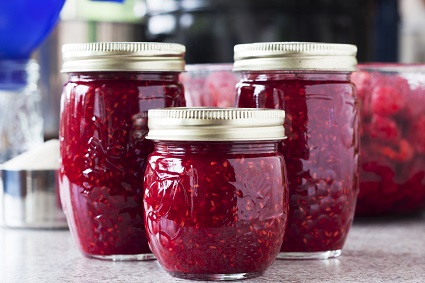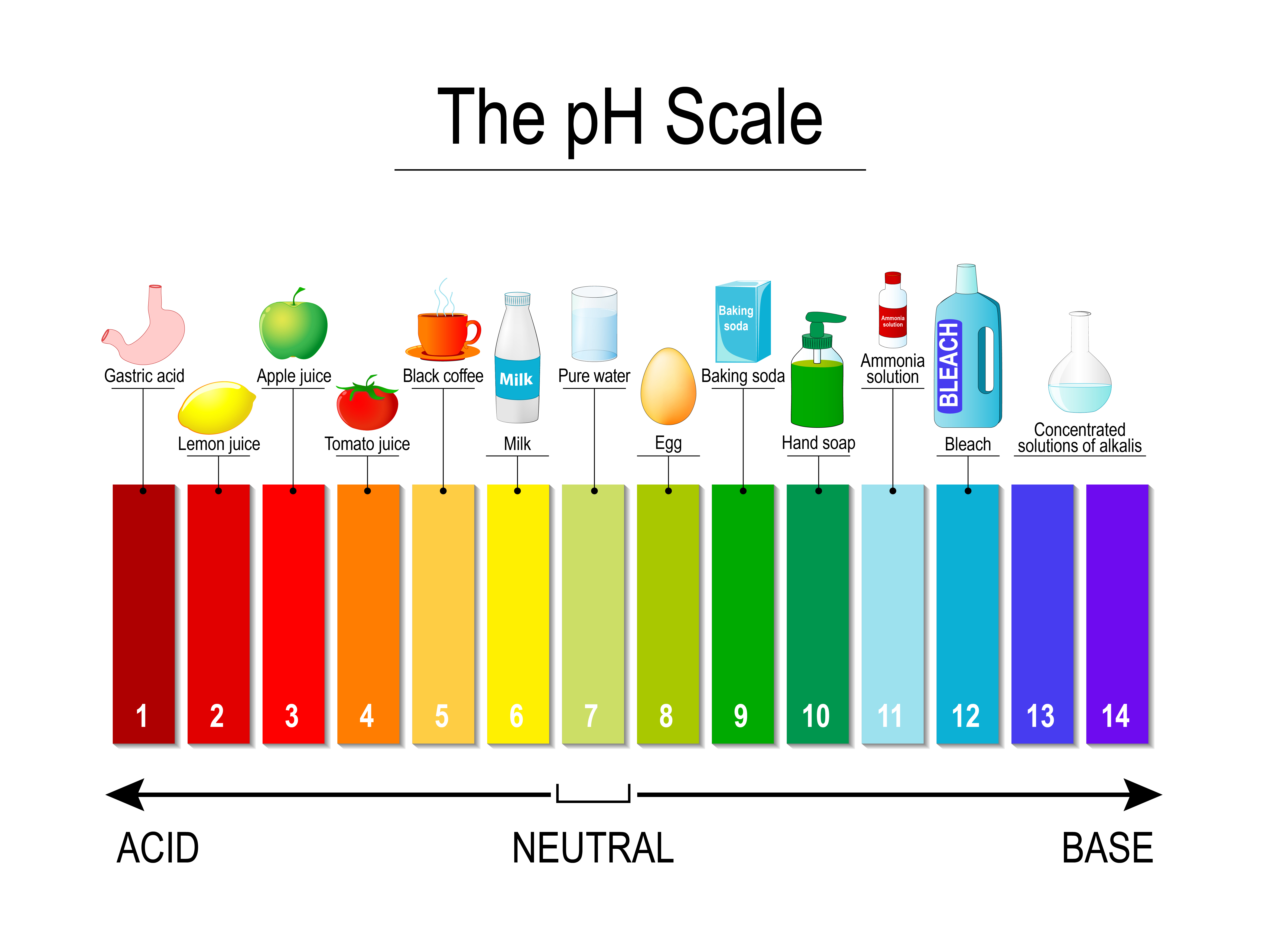Cottage Food

What is cottage food?
Cottage food is a category of foods that are produced in the home and do not require temperature control for safety.
These non-potentially hazardous foods can be sold in Alaska directly to consumers and a food permit is not required as long as certain conditions are met.
- Questions about cottage food?
- Contact your local Environmental Health Officer.
On This Page
Non-Potentially Hazardous Foods
Non-potentially hazardous foods do not require temperature control for safety. These foods do not support the growth of dangerous bacteria because of their pH values, water activity values, or a combination of pH and water activity values.
A good method to determine whether a product is non-potentially hazardous is to decide whether it requires refrigeration to keep it safe or to preserve it. If it does not require refrigeration, it is most likely non-potentially hazardous. Visit the Determining Non-Potentially Hazardous Foods webpage for more information.
If a producer is unsure about the safety of their product or whether it requires refrigeration for safety, lab testing may be required. Be sure to contact Cooperative Extension or Food Safety and Sanitation for more information.
pH and Water Activity
pH is a scientific measure of how acidic or basic a substance is. pH is measured on a scale of 0 to 14. A lower pH value indicates the substance is more acidic and a higher value indicates the substance is more basic.
Food products at a pH of 4.6 or lower will control the growth of dangerous pathogens that cause botulism and other foodborne illnesses.

Water activity (aw) is measured by how tightly bound the water is in the food product. Water activity is measured on a scale from 0 (bone-dry) to 1.0 (pure water).
Most food products have a water activity in the range of 0.2 for very dry foods to 0.99 for moist, fresh foods.
Water activity is important because it can be used to predict the growth of harmful bacteria, yeasts, and molds. Food products with low water activity do not provide a good environment for pathogens to grow and will last longer on the shelf.
Some foods may not require refrigeration because they have a combination of low water activity and an acidic pH. Testing product for water activity and pH allows producers to decide whether their product requires refrigeration or not. Visit the Determining Non-Potentially Hazardous Foods webpage for more information.
How to Test Food Products
The Alaska State Environmental Health Laboratory can test your food products for pH and water activity. The cost for pH testing is $20 per sample and the cost for water activity testing is $10 per sample.
Cottage food producers will need to contact the Shipping and Receiving Department at the lab prior to sending any samples.
- Environmental Health Lab Shipping and Receiving
- 907-375-8231
- DEC.EH-Lab-ShippingReceiving@alaska.gov
Shipping and Receiving will give specific directions for the type of food sample being tested, including:
- Which sections must be filled out on the Food Sample Submission Form;
- How much product sample is required for the tests being requested;
- Instructions for packaging and labeling the product sample; and
- Information about payment, shipping or delivering the sample, and receiving results.
Visit the laboratory website for more information. The Food Sample Submission Form can be downloaded from the sample submission forms webpage.
Foods That Are Exempt
Many foods fall under the cottage food exemption in Alaska, including:
| Product | Kept on File |
|---|---|
| Breads (or similar baked goods) | Recipe/process |
| Cakes (including celebration cakes) | Recipe/process |
| Sweet breads and muffins that contain fruits or vegetables (e.g. pumpkin or zucchini bread) | Recipe/process |
| Cooked fruit pies | Recipe/process |
| Cookies | Recipe/process |
| Baked goods that contain alcohol (e.g. rum cake) | Recipe/process |
| Crackers | Recipe/process |
| Product | Kept on File |
|---|---|
| Jams and jellies in glass jars that can be stored at room temperature | Recipe/process |
| Vinegars (including flavored vinegars) | Recipe/process |
| Mustards | pH test |
| Extracts - including vanilla and lemon extract | Recipe/process |
| Pickles | pH test |
| BBQ Sauces | pH test |
| Salsas | pH test |
| Relishes | pH test |
| Ketchup | pH test |
| Bottled carbonated beverages | Recipe/process |
| Juices (berry and rhubarb) | pH test |
| Product | Kept on File |
|---|---|
| Fudge | Recipe/process |
| Truffles | Recipe/process |
| Brittles | Recipe/process |
| Chocolate covered pretzels, marshmallows, graham crackers, or fruit | Recipe/process |
| Product | Kept on File |
|---|---|
| Kombucha | pH test or recipe/process |
| Fermented fruit and vegetable products (e.g. sauerkraut and kimchee) | pH test |
| Product | Kept on File |
|---|---|
| Baked product mixes (e.g. pancake, cake, or cookie mix) | Recipe/process |
| Dried soup or dip mixes | Recipe/process |
| Freeze Dried/Dehydrated vegetables or fruit | Recipe/process |
| Popcorn, popcorn balls | Recipe/process |
| Dry herbs and dry herb mixtures | Recipe/process |
| Dried pasta made with eggs | Water activity test |
| Nuts: coated or uncoated | Recipe/process |
| Roasted coffee and dried tea | Recipe/process |
| Waffle Cones | Recipe/process |
| Tortillas | Recipe/process |
| Flatbreads (including elephant ears) | Recipe/process |
| Fruit leathers | Recipe/process |
Foods That Are Not Exempt
Potentially hazardous foods that require time and/or temperature control for safety are not allowed to be produced under this exemption. Examples of foods not allowed include:
- Meat and meat products including fresh and dried meats (jerky)
- Fish and fish products (e.g. smoke salmon, canned salmon, etc.)
- Raw seed sprouts
- Garlic in oil mixtures
- Baked products that require refrigeration (e.g. cheesecake, custards, lemon meringue)
- Cheeses
- Dairy products (including ice cream)
- Non-acidic canned foods (i.e. canned vegetables that are not pickled or fermented)
- Pesto
- Fresh vegetable juices
- Food products made with cooked vegetable products that are not acidified
- Bottled Water
- Cold brew coffee
Meeting the Requirements of the Cottage Food Exemption
To sell cottage food in Alaska, producers must meet the following conditions:
- Process, prepare, package, and sell the product only in Alaska.
- Keep and provide detailed knowledge about the ingredients of the food product and how it was processed, prepared, and packaged.
- Have the food product recipe or formulation available in case there is ever a concern about the safety of the product.
- For pickled or dried product, have information available about the pH or water activity.
- Sell directly to the consumer by an individual who knows what ingredients were used to make the product and how the food was prepared and packaged. This individual must be able to answer consumers' questions about the product, including whether allergens are present in the food product.
- Do not distribute or sell the product to stores, restaurants, by mail order, or on consignment.
- Keep total gross receipts of sales of food items to show gross sales do not exceed $25,000 within a calendar year.
- If the food is not prepared in a permitted, approved, or inspected kitchen, inform the consumer by a card, placard, sign, or label placed in a conspicuous area that states the following: "These products are not subject to state inspection."
- Label packaged food with either: an Alaska Business License number or the name, physical address, and telephone number of the individual who prepared the food. This allows DEC to trace the product back to the producer if there is a problem or complaint.
Regulatory References
- 18 AAC 31 Alaska Food Code
- 18 AAC 31.012 Alaska Food Code Exemptions
- 18 AAC 31.985 Potentially Hazardous Foods
Resources and Contacts
Resources
- Determining Non-Potentially Hazardous Foods
- Information about using pH and water activity (aw) to determine if a food is non-potentially hazardous
- Alaska Food Code Exemptions
- A summary of food code exemptions in Alaska
- Farmers Markets
- Information about selling food products at farmers markets in Alaska
- Guide to Operating a Successful Home-Based Food Business
- A publication of the Cooperative Extension Service in partnership with the Department of Environmental Conservation
- Selling Eggs
- Information about safely selling eggs in Alaska
- Made in Alaska
- Information from the Department of Commerce, Community, and Economic Development about the Made in Alaska program
- Non-Timber Forest Product Commercial Harvest Permit
- Information from the Department of Natural Resources about obtaining a limited non-timber forest product commercial harvest permit
Contacts
- Food Safety and Sanitation
- Find your local Environmental Health Officer
- Cooperative Extension
-
- 308 Tanana Loop, Room 101
- P.O. Box 756180
- Fairbanks, Alaska 99775
- 907-474-5211
- ces@alaska.edu
- Environmental Health Laboratory
-
- 5251 Dr. Martin Luther King, Jr. Avenue
- Anchorage, Alaska 99507
- 907-375-8200
- DEC.EH-Lab-ShippingReceiving@alaska.gov

 Indicates an external site.
Indicates an external site.